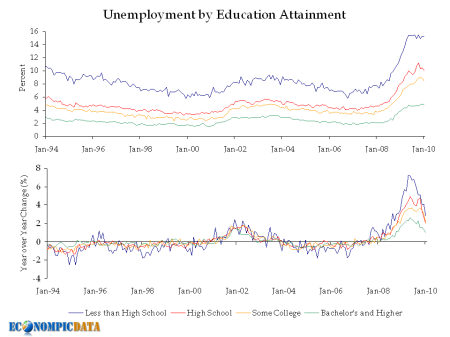I just finished reading The Warmth of Other Suns, Isabel Wilkerson’s incredible book about the Great Migration. It deserves its own post (or three), but I’ll highlight one overlap here. (Also, please don’t go back through the archives to see how long it has taken me to finish it. And if you do, you should blame my semester and not the book).
In tracing the journey of one of her three main characters, Wilkerson writes about white flight from neighborhoods in the cities of the North. She writes that while the arrival of black families was associated with decreases in housing prices, the decline worked almost exclusively through a mechanism of fear. A whisper of black integration put neighborhoods into “real estate purgatory” that set off a downward cycle of anticipation in which no one would buy, rent prices fell in an attempt to attract poorer whites, homeowners sold for less than their home was worth to avoid getting “stuck,” and those who remained had no incentive to invest in or improve their properties.
Thus many white neighborhoods began declining before colored residents even arrived. There emerged a perfect storm of nervous owners, falling prices, vacancies unfillable with white tenants or buyers, and a market of colored buyers who may not have been able to afford the neighborhood at first but now could with prices within their reach. The arrival of colored home buyers was often the final verdict on a neighborhood’s falling property value rather than the cause of it” (376-7).
I recently read an article by Philip Nyden, Michael Maly, and John Lukehart from 1997 asking whether or not stable racially integrated neighborhoods exist in the United States. In short, they do, and the article is worth reading if you have access to it. But what really struck me was the slightly-updated-but-still-the-same-as-the-1950’s summary of the ways in which our assumptions shape reality:
…the persistent…misconception [is] that economically, racially, and ethnically mixed neighborhoods are inherently unstable and not viable. For middle-income white homeowners and renters, racial or economic diversity is interpreted as a signal of neighborhood decline and imminent declines in housing values. For lower-income groups, such diversity often flags the possibility of gentrification, increasing housing costs, and the concomitant displacement of low-income renters.
In both cases, those expectations shape what happens next. On one hand, expecting decline, those who can get out. On the other, expecting gentrification, potential buyers looking to make an investment start considering a neighborhood they wouldn’t have before—their very consideration inching prices up.
For me, there’s no doubt that personal prejudice still plays a significant role in perpetuating housing segregation. But if we could get the market hysteria out of the equation, it’d certainly help.
Jonas




